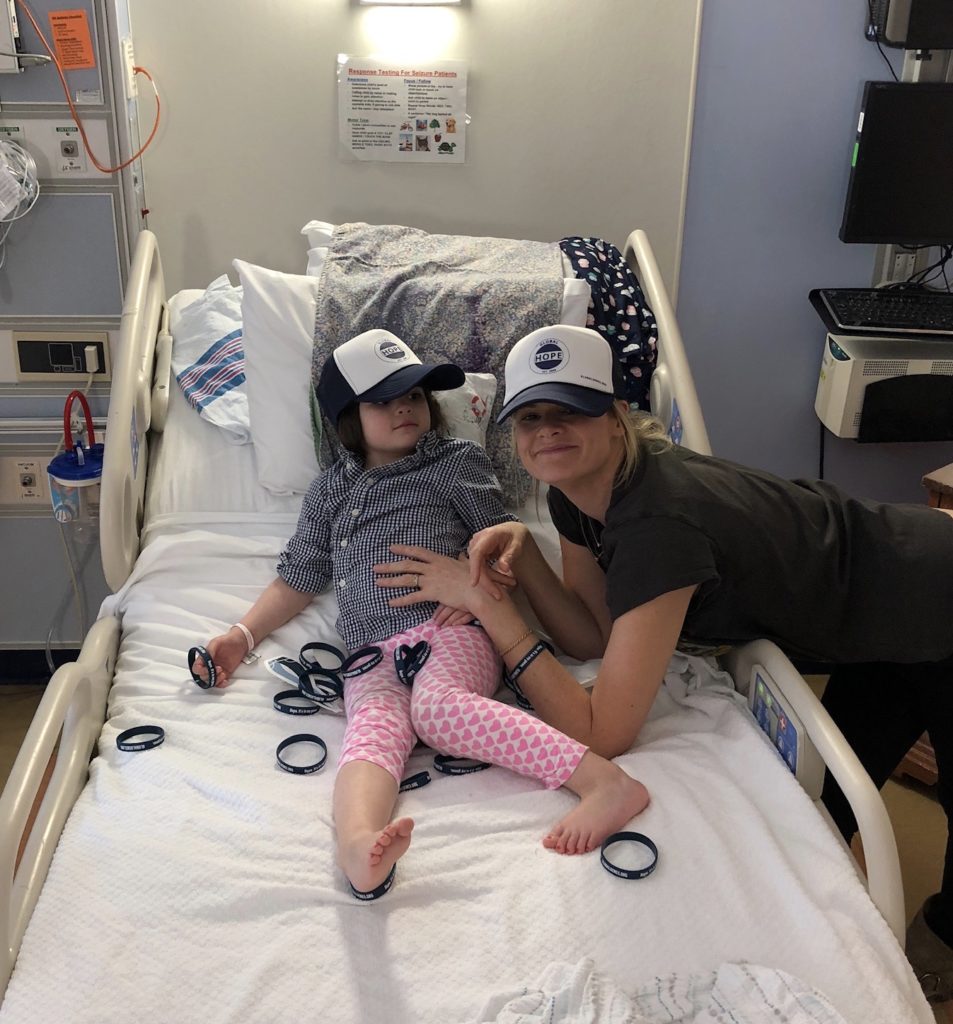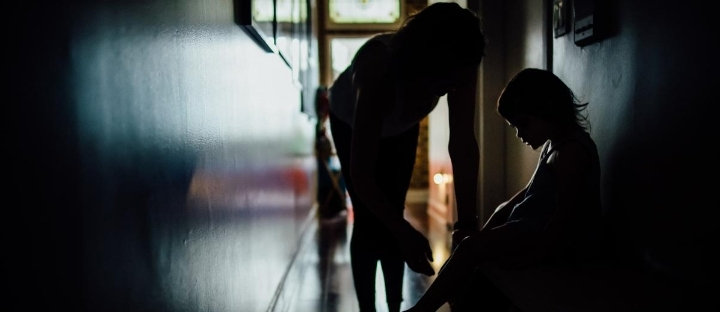By Luke Rosen
We need the world to know about KIF1A.
KIF1A is a gene. A mutation in that gene is causing the neurological disease our daughter was diagnosed with last year. KIF1A is stealing away Susannah’s steps and sight. She’s not alone. So we scream from the mountaintops. We fight to get kids the tests they need, and hope their diagnostic odyssey ends with a genetic report that has KIF1A.ORG listed as a resource for scared parents like us. When families reach out to the foundation, our army of parents and scientists sprinting toward a cure gets larger and stronger. Last year, 25 kids in the world. This year, 100 kids. Closer every single day.
With this sudden progress comes questions about how family-led foundations start, and if it really is possible to accelerate discovery of treatment and cures for our children. A large part of that dialogue revolves around numbers, cost, and the seemingly unscalable mountains standing in the way of getting treatment for our kids before time runs out.
Sally and I wake up every morning with a fleeting moment of forgetfulness. Forgetting for a split second that our daughter has a degenerative disease with no treatment or cure (yet). What we would give for that fleeting moment to last a lifetime. But it doesn’t. Before the alarm goes off at 4:45am, that moment is gone and we are acutely aware that Susannah’s clock is ticking. When we woke up yesterday to see KIF1A in The Wall Street Journal we were relieved and thankful. Maybe today the world will notice Susannah and the other children. Maybe today people will see the epic unmet need in our community. Today the organization will get stronger. Today more families will call.
A vital set of numbers and cost analysis is missing from almost every piece of rare disease literature circulating the world. So, I thought I would share insight about what it takes to start a foundation aimed at curing rare disease. A foundation like ours, started to discover treatment for our daughter and kids like her. KIF1A Associated Neurological Disorder is a neurodegenerative syndrome with a progressive course. A disease shortening the lives of our children and stealing away their speech, vision and mobility. A small window exists for science to catch up and save the life of every child with KIF1A. Together with our doctors we’re making progress. Together with all the families we’re opening the window.
So, for the families of those 7000 rare diseases affecting the population, and those who want to join the approximately 265 nonprofit organizations working to accelerate discovery, here is an intimate look at the numbers and the real cost of running a rare disease org.
KIF1A.ORG is centered around superheroes. It is our theme, it is what inspires families and scientists to relentlessly fight a disease with no name. KIF1A kids are superheroes with severe movement disorders, seizures, brain atrophy overwhelming developmental delays, and a neuropathy that gives them a high tolerance of pain — they literally are superheroes. But they have a partner. Another real superhero who is not pictured on websites, featured in the news and celebrated. For us, that person is Sally, Susannah’s mother and my wife.
On August 15, 2016 doctors told us we should go home and spend as much time with our daughter as possible. We decided to do more. The next day I called my agent (and close friend) of ten years to tell her I was leaving my career as an actor to find treatment for Susannah. Before hanging up I said “I’ll get back to set once we sort things out for Sus.”
Next came the task of organizing a nonprofit to jumpstart KIF1A research, a gig that never clocks out. I also had to get back to school and catch up on biology. Within a week, I went from reading TV scripts and writing plays, to fumbling through scientific journals and writing grants. I was distracted and absent, but Sally was focused at the helm keeping us on course, as always.
Sally is the most present and passionate parent any child could have. She has a full-time career and a work ethic that makes her first to the office in the morning and last to leave at closing time, but that noise never gets in the way of what matters most. She’s at every ballgame and pot luck. Every doctor’s visit, every brace fitting, every everything. Because our kids have a mom who is so remarkably present in their lives, it is unfathomable that the foundation’s work is guided by Susannah’s often silent, and too humble mother. But it is. There is a difference between being with your children and being with your children; a connection that transcends geography, and even when they are apart, she is with Susannah and Nat every second of every day.
Truth is, there will never be a tangible list outlining the real cost and countless work hours required to run a rare disease foundation relentlessly searching for treatment. The cost is not monetary and the workday never ends. While we can rattle off price tags for research proposals and fundraising events, the value of what our superhero does daily is beyond measure. There is no powerpoint, no item on the board’s agenda or call to take. There is just life. A messy, new parental normal with an unthinkable reality. Piles of never-ending paperwork contesting hospital bills; fighting for every service and therapy Susannah needs; communicating with school; hours of Medicaid applications; disability parking permits; utility bills; making sure every birthday gift is ordered; saving every lost tooth and teaching me how to put pigtails in a three-year-old head of hair — a beautiful head that jerks with spasticity more and more every morning.
Sally’s allotted vacation days are planned around Susannah’s extended hospital stays. She wakes up at 5:00 every morning to make lunch and hides little notes in their backpacks reminding each how much we love them — not that they ever need reminding. It is a job description as rare as the disease, and a routine soaked in grit.
Nat and Susannah inherited their mother’s work ethic — that’s obvious every day, watching our brave daughter fight through PT sessions with tears in her eyes and strength that makes me the proudest father in the world. So, in case anybody is wondering what it takes and how much it really costs to start a foundation like ours, sorry I can’t give you a dollar amount. I can only speak to my experience as the co-founder of a rare disease org forged out of necessity: it takes Susannah’s mother, my wife and my best friend. It takes a superhero.


